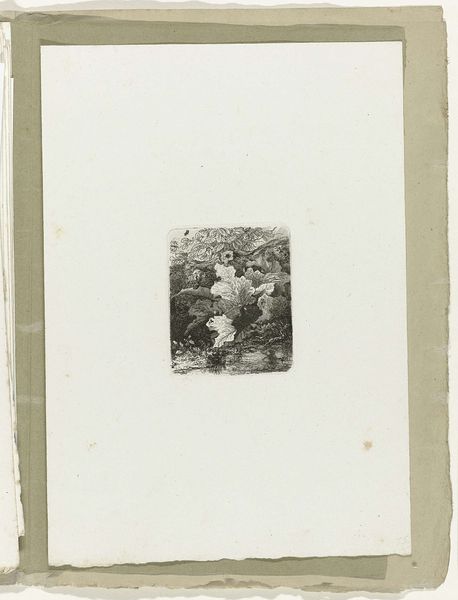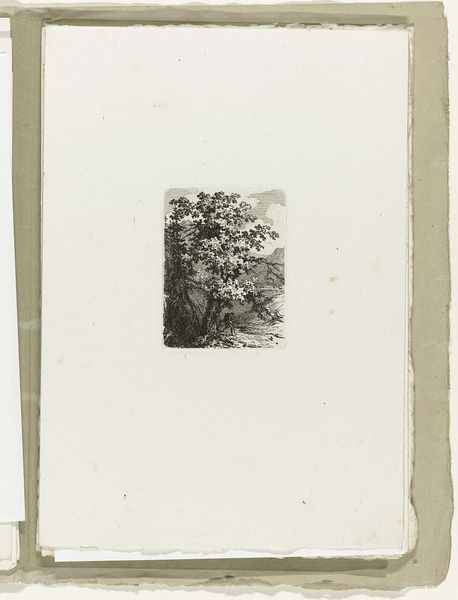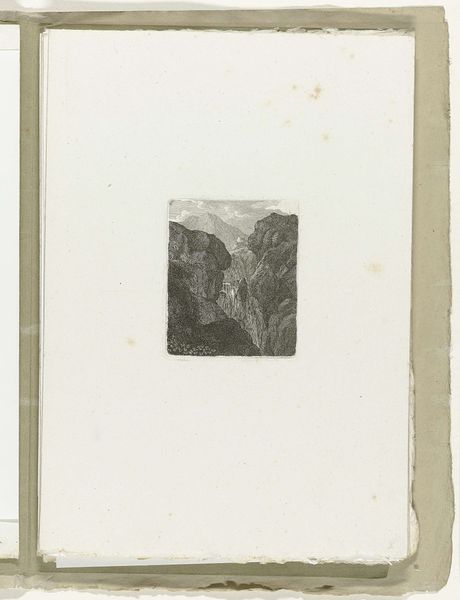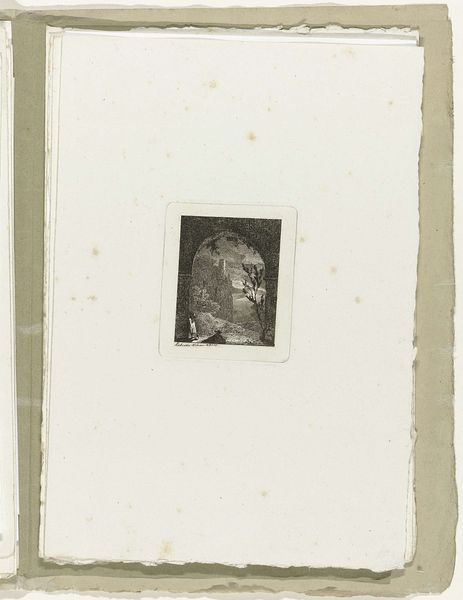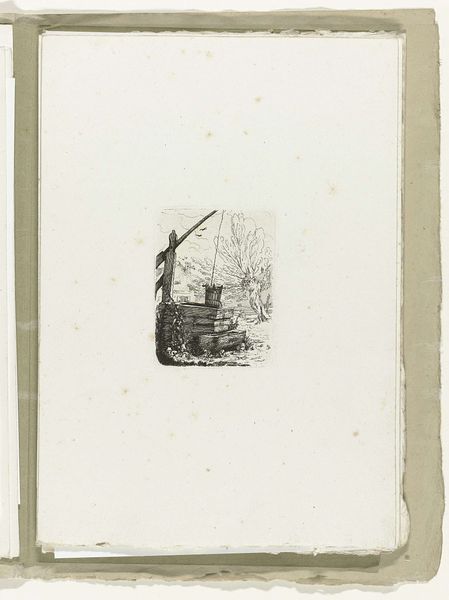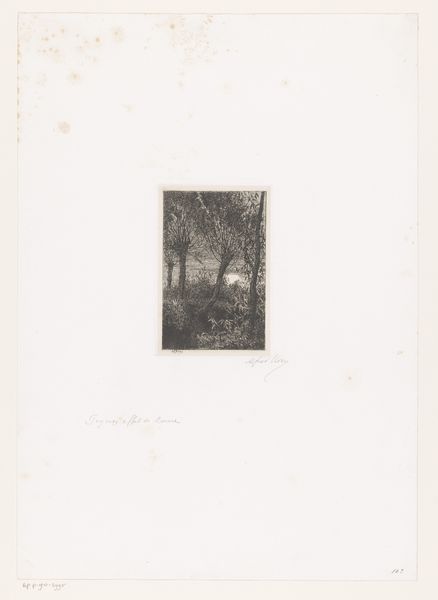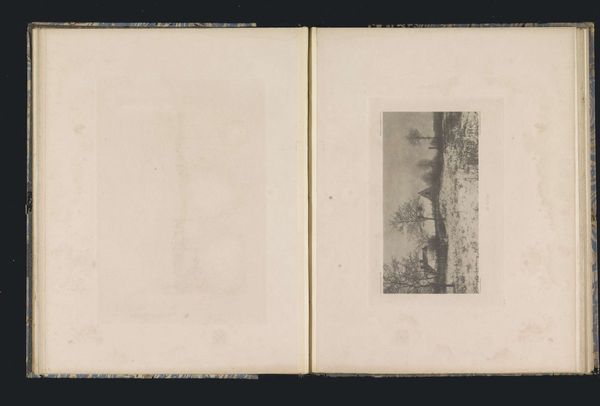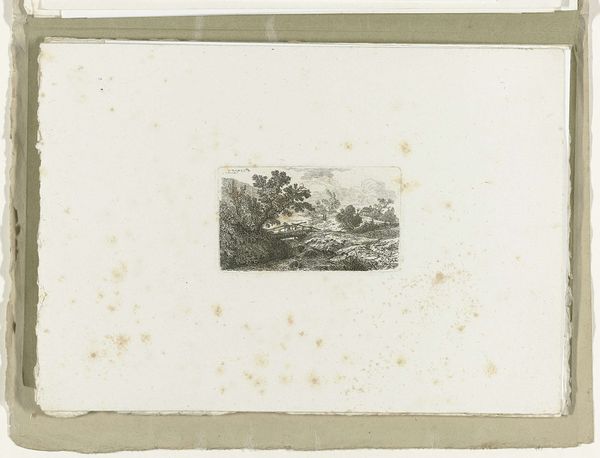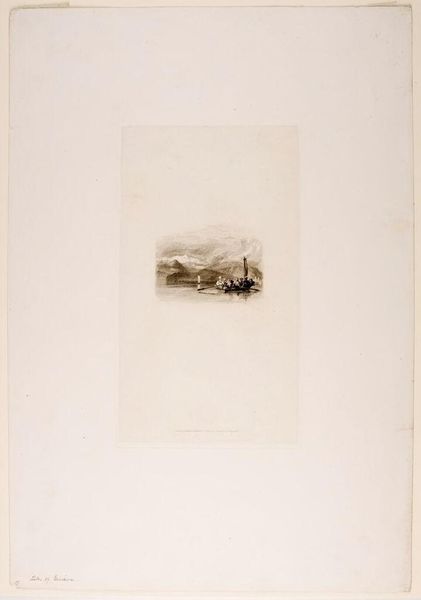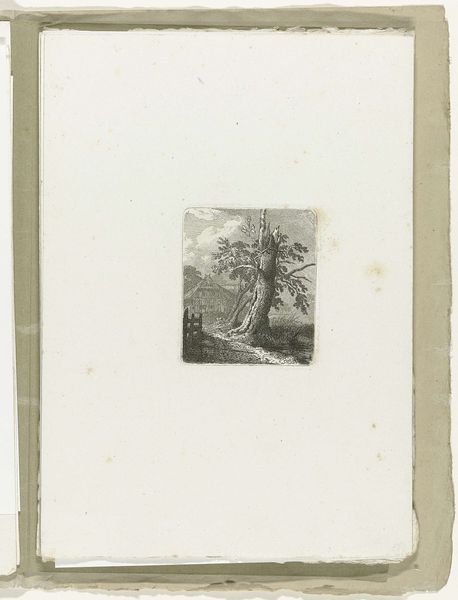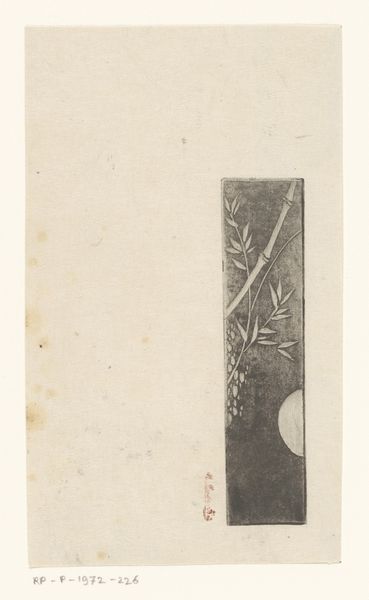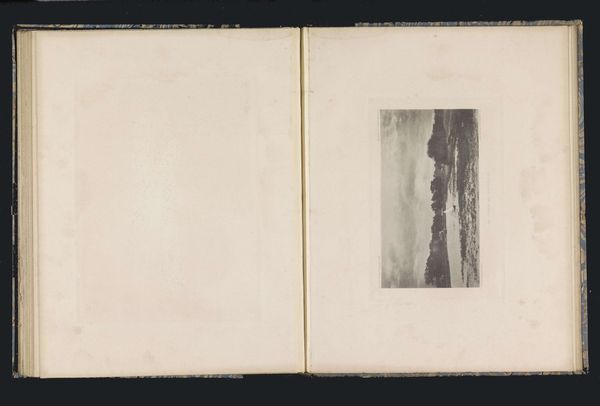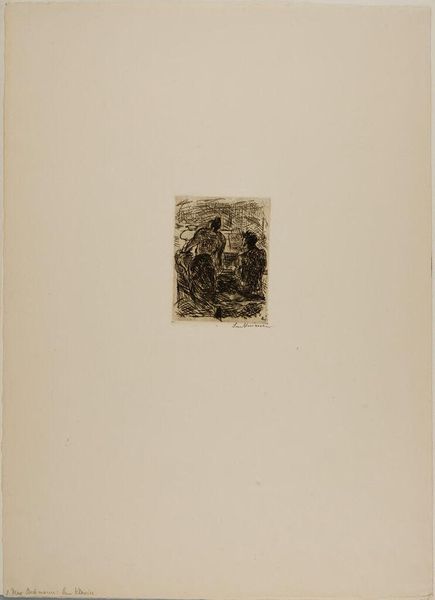
Dimensions: height 91 mm, width 51 mm, height 280 mm, width 181 mm
Copyright: Rijks Museum: Open Domain
Editor: Here we have Carl August Lebschee's etching from 1827, "Hunter with Dog by a Dead Tree". It's quite small, and the darkness of the ink gives it a somewhat somber mood. What strikes you about this piece? Curator: What interests me is the artist's choice of etching. Etching is inherently a reproductive process. This allows for a democratization of images; here, a Romantic-era scene, typically reserved for painting or large-scale prints for the wealthy, can become a more accessible commodity. Editor: That's a fascinating point. So you're focusing on the social impact of the material, the printmaking itself. Curator: Exactly. Consider the paper it's printed on, likely made from rags - a recycled material. The consumption cycle becomes part of the artwork's story. Where would this etching have been displayed, and who would have consumed it? Editor: Perhaps in a book of illustrations or a collection of prints owned by someone of modest means? Curator: Precisely. And think about the labor involved. Etching demands skilled craftsmanship, from preparing the plate to the printing itself. Where did Lebschee learn this process? Who was providing his materials, what kind of workshop? This small print raises big questions about the economies of art-making. Editor: I see what you mean. It's not just the image of the hunter, but the entire material process that gives the work its significance. Curator: Absolutely. The print collapses the space between ‘high art’ landscape and the everyday lives of its producers and consumers. What do you think the choice of imagery might mean when mass-produced? Editor: Maybe, the print allows more commoners to find commonality through accessible imagery reflecting ideas about nature. Thanks for shedding light on it! Curator: My pleasure! Considering the means of production adds valuable context to the finished work.
Comments
No comments
Be the first to comment and join the conversation on the ultimate creative platform.
